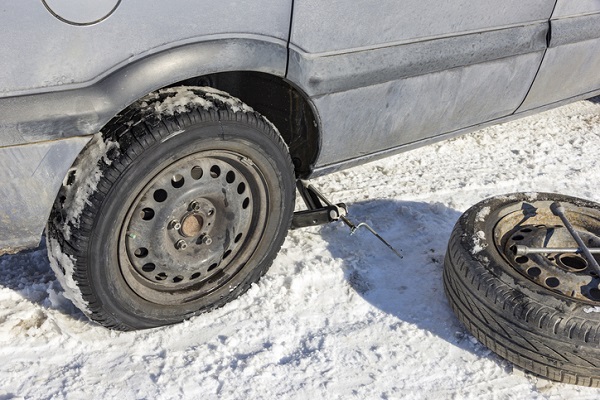
When the temperatures start to drop and the snow starts to fall, it is the right time to visit the local auto mechanic shop. Although the cold winter months can be especially tough for drivers, the key to getting through the season is similar to the rest of the year: preventative maintenance. Well, that and paying attention to any signs of winter damage.
Whether you drive long distances or short, in rural areas or through city streets, there are special steps car owners need to take to keep their cars running well during winter. Here are a few things to look out for that should help you avoid any major problems.
1. Low Tire Pressure
Throughout your auto repair career you will likely repeat the advice to customers to make sure their tires are properly inflated. This is even more important in the winter because tires lose pressure more easily in sub-zero temperatures. Low pressure can lead to extra tire wear and underinflated tires are more likely to overheat and blowout. Like many car issues this is both a maintenance and safety concern.

2. Extra Battery Draw
A car battery tends to get overworked in the winter partially because of extra draw from things like the heater and fog headlights. If the battery is more than three years old, or registers lower than 12.6 volts in a voltmeter test, you may just want to get a new one to get you through the winter, especially if you park outside overnight. Of course, no matter hold old your battery is, make sure you always have a pair of jumper cables in your car for emergencies.
3. Frozen Fuel Tank and Cold Fluids
Condensation in the gas tank can freeze and is more likely to be a problem if you drive around with a low fuel level. This can make it difficult for fuel to get to the engine and cause problems in general. Additionally, any liquids like engine oil or transmission fluid will be thicker in low temperatures. For this reason some people recommend letting your engine idle for a bit after it has been parked for a long time.
4. Broken Windshield Wipers
A very common problem a lot of drivers face is maintaining windshield wipers during winter. Windshield washer fluid can freeze as it hits the glass, snow can melt then freeze on, or you might just not feel like scraping away the frost before you get in your vehicle. One way to deal with this is to set your heater controls to defrost and be patient. Forcing your windshield wipers over ice and frost can damage them.

5. How to Become a Mechanic During Freeze and Thaw
Sometimes winter temperatures fluctuate in short periods of time. If you want to know how to become a mechanic you may have to learn how to deal with the problems that arise from quickly changing temperatures. These can affect any of the components in a car as metal expands and contracts. Components can crack, which may cause leakage and the need for expensive repairs. Just like other times of the year, most winter problems can be avoided if you pay attention to small issues and get them fixed early, so that they don’t become major headaches.
Ready to take the next steps in your auto mechanic career?
Find out what Automotive Training Centres has to offer.

